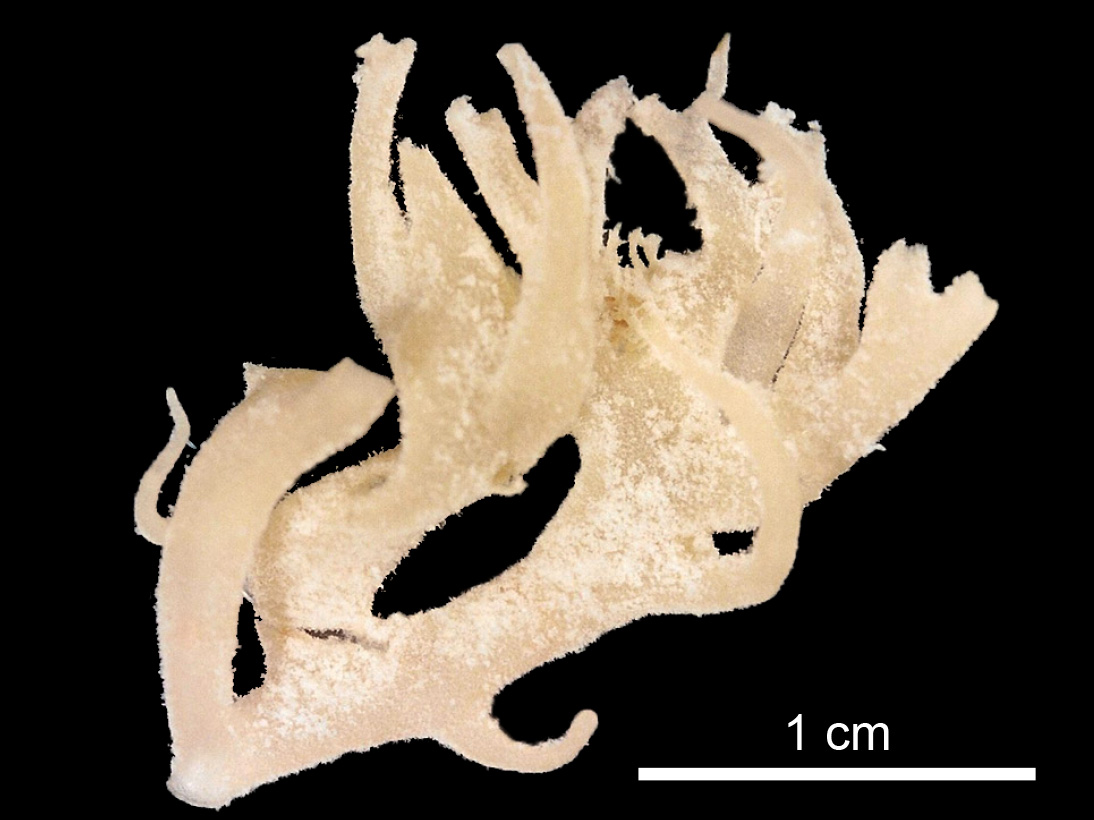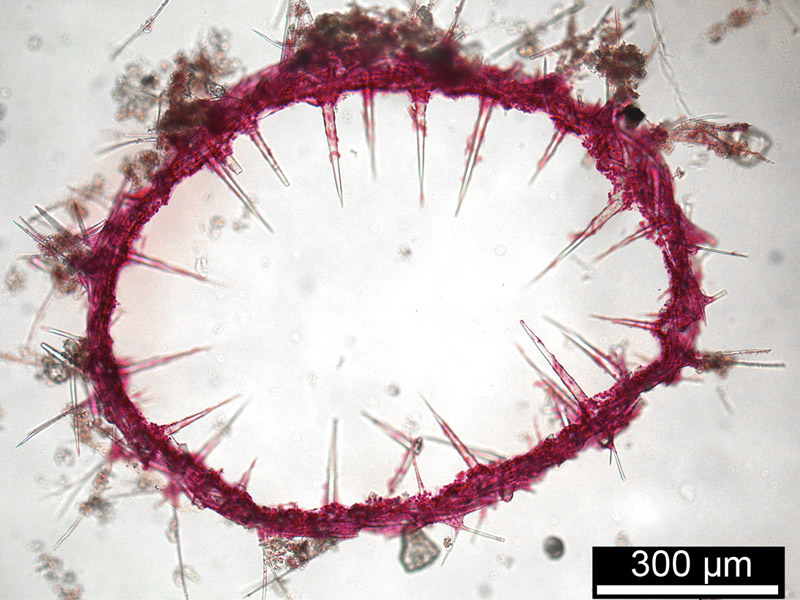Morphological description (show/hide)
| Several olynthus-like tubes grow from basal stolon-like tubes. Distal tubes ramify and the proximal (deeper and older) tubes are larger (0.5cm diameter) than the distal (top) tubes, which are slightly conical (> 1 mm at the osculum). The size of the specimen is 2x3cm. | | white | | beige | | One naked osculum is apical at the end of each distal tube. | | Smooth | | No surface ornamentation is visible macroscopically, but fine grained silt and organic material produces a dirty-whitish cover (like dust) on the external surface of tubes. | | The choanosomal skeleton is sustained by a tangentially arranged basal triradiate system of tetractines of very variable size and form, forming the walls of tubes. Two main types of spicules were distinguished: a larger regular, and a smaller parasagittal-sagittal type of tetractine. Their apical actines, which are sometimes greatly exaggerated in the larger regular type, and reduced in the smaller sagittal type, protrude into the tube. Actines of their basal triradiate systems, which are thicker in the regular type, do overlap, with up to five actines partially stacked above each other, supporting the tube wall. Tube walls have a thickness of about 100um (excluding the diactines). | | Diactines are arranged perpendicular to the surface of tubes in tee-pee -like bundles, where individual diactines arc aligned at an angle of <45¡ to each other and cross in their proximal lower third. These diactines are covered with a biofilm which contains small sediment particles, diatoms, and foraminiferans (producing the dusty appearance on the external surface). The slightly broader base of diactines sometimes protrudes slightly through the choanosomal skeleton, whereas the proximal part of diactines is mostly anchored between the basal systems of the tetractines, not protruding into the tube. | | The choanosomal skeleton is sustained by a tangentially arranged basal triradiate system of tetractines of very variable size and form, forming the walls of tubes. Two main types of spicules were distinguished: a larger regular, and a smaller parasagittal-sagittal type of tetractine. Their apical actines, which are sometimes greatly exaggerated in the larger regular type, and reduced in the smaller sagittal type, protrude into the tube. Actines of their basal triradiate systems, which are thicker in the regular type, do overlap, with up to five actines partially stacked above each other, supporting the tube wall. Tube walls have a thickness of about 100um (excluding the diactines). No differentiation and/or zonation of spicule types was observed. |
|



